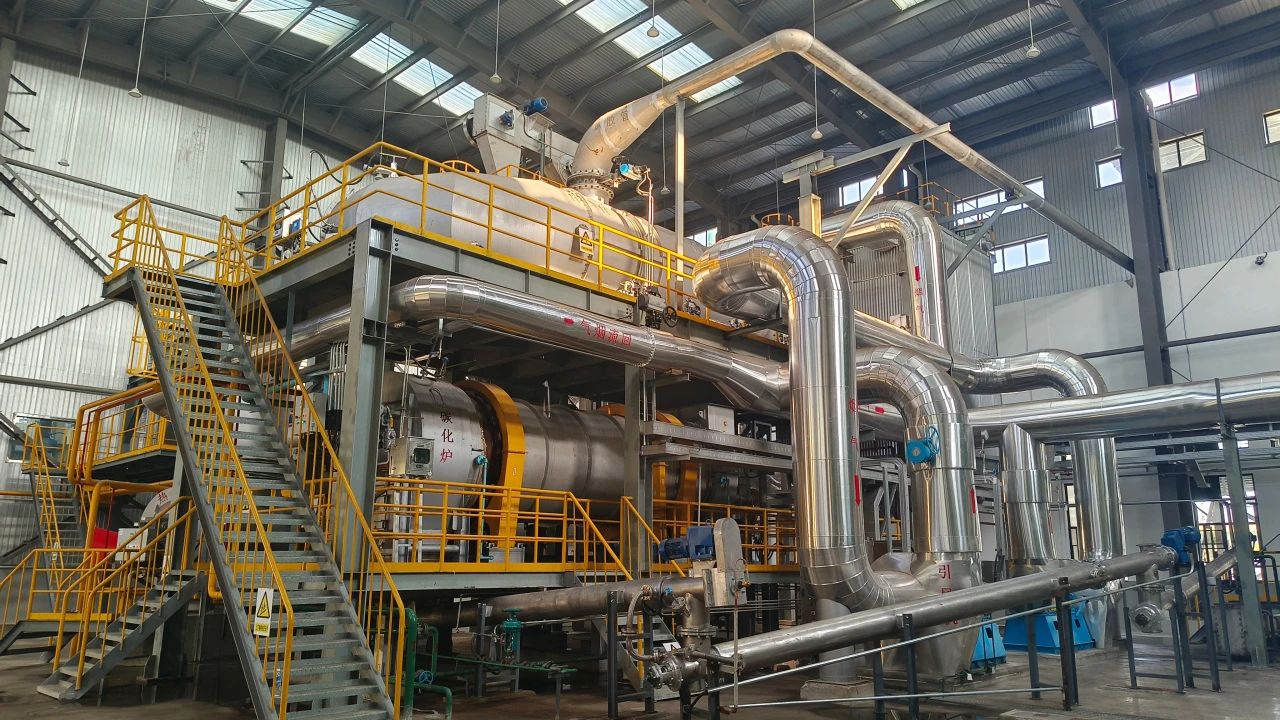
On August 24, the sludge disposal project at Nanyang Sewage Treatment Plant, constructed by ZHGAS, successfully completed a 168-hour continuous performance assessment. All technical indicators met or exceeded the contracted standards, providing a high-quality solution for the harmless and resource-based treatment of regional sludge and setting a new benchmark for green development in the industry.

With a daily processing capacity of 100 tons, the project further treats sludge generated by the Nanyang Sewage Treatment Plant. After dehydration, drying, and carbonization, the sludge is converted into chemically stable and environmentally harmless carbonized material. Approximately 100 tons of sludge yield about 12-14 tons of carbonized material, achieving significant volume reduction. The heat recovered from the carbonization process is reused to provide thermal energy for sludge drying.
As a key environmental protection infrastructure upgrade project in Nanyang, the 168-hour performance assessment validated critical indicators such as sludge processing capacity, energy consumption costs, and pollutant emissions. The results demonstrated that the project’s continuous operational stability and processing efficiency met expectations, marking its official readiness for large-scale operation.
Breakthrough in Front-End Filter Press Technology: Low Per-Ton Processing Cost, Significantly Outperforming Industry Average
The project’s core technical advantage lies in its front-end sludge filter press system. According to the project’s technical lead, the system precisely controls filtration parameters to significantly reduce the moisture content of sludge, thereby lowering the energy demand for subsequent drying and carbonization processes. The efficient integration of the filter press system with downstream treatment processes creates a synergistic effect of "pre-treatment reducing load — main process enhancing efficiency." This not only reduces per-ton processing costs but also decreases natural gas consumption, balancing economic efficiency and low-carbon benefits. It offers a replicable cost-optimization pathway for similar projects. Actual operational calculations show that the project’s per-ton sludge processing cost is significantly lower than the current industry average, placing its cost advantage at the forefront of the industry.
The successful operation of this project will further enhance Nanyang’s sludge treatment capacity and support the region’s "Zero-Waste City" initiative. It also provides a replicable and scalable "Nanyang Model" for sludge treatment and disposal in small and medium-sized cities across the country, holding significant demonstration significance for the industry. Moving forward, ZHGAS will continue to leverage technological innovation to deliver integrated solutions characterized by "controllable costs, compliance with environmental standards, and resource recycling" for more environmental protection projects, driving high-quality development in the sludge treatment industry.